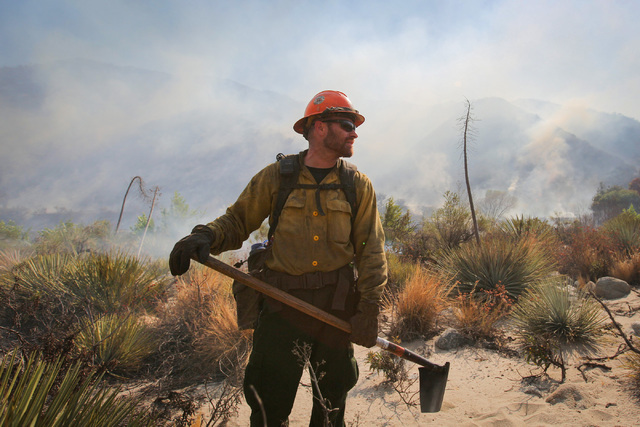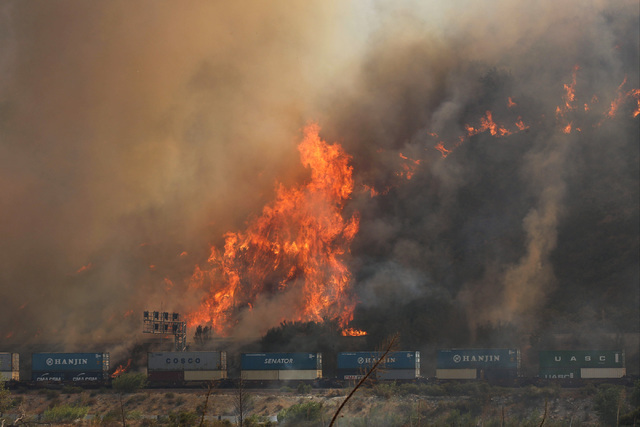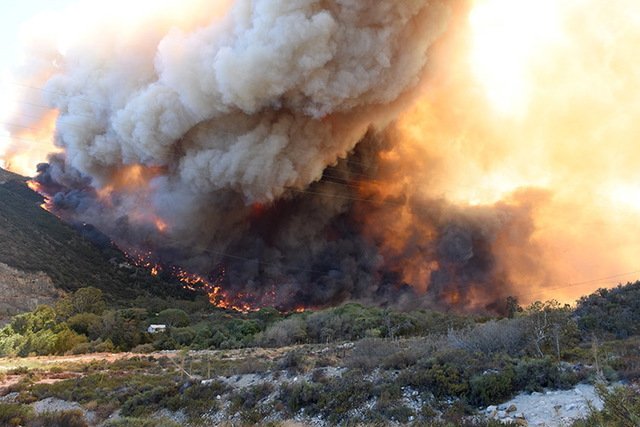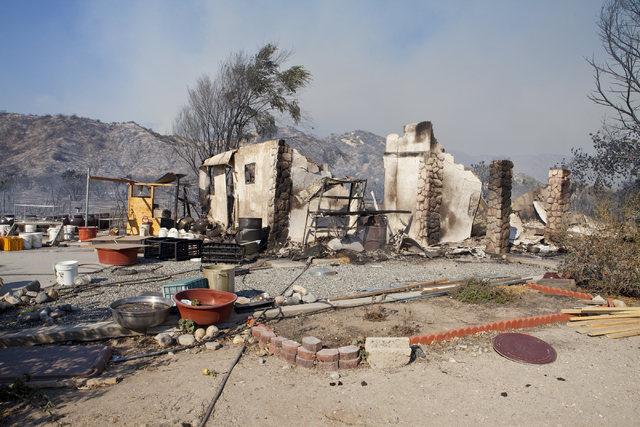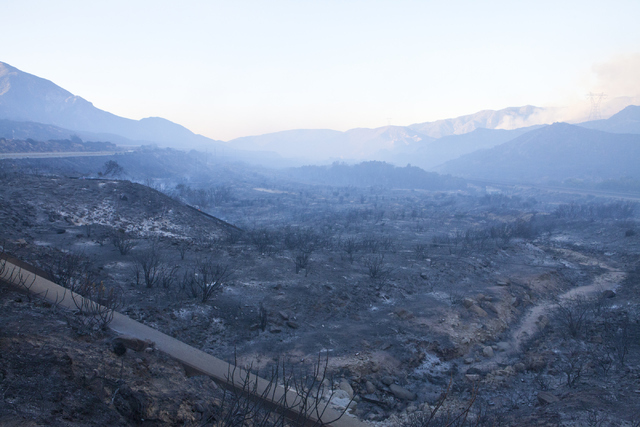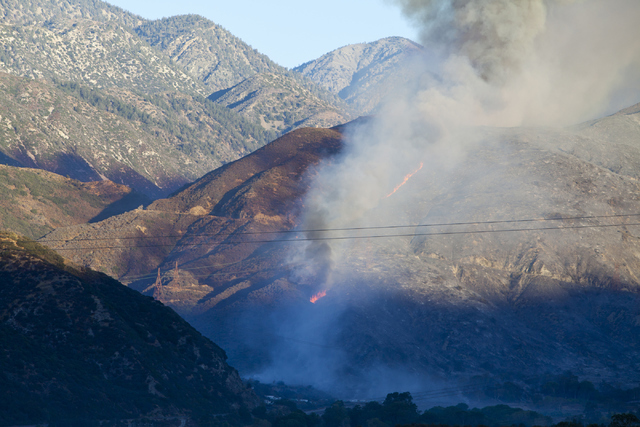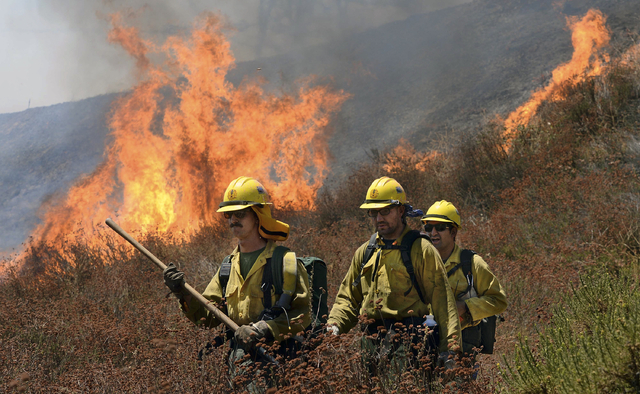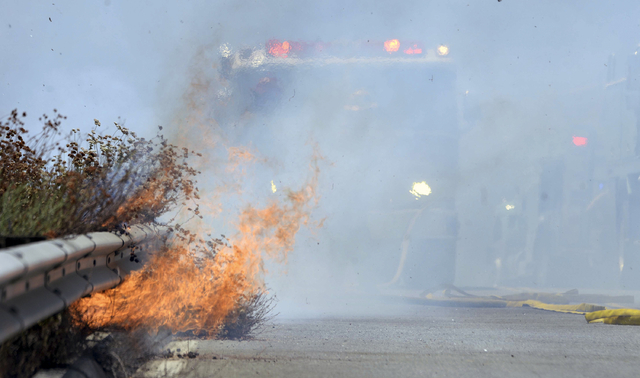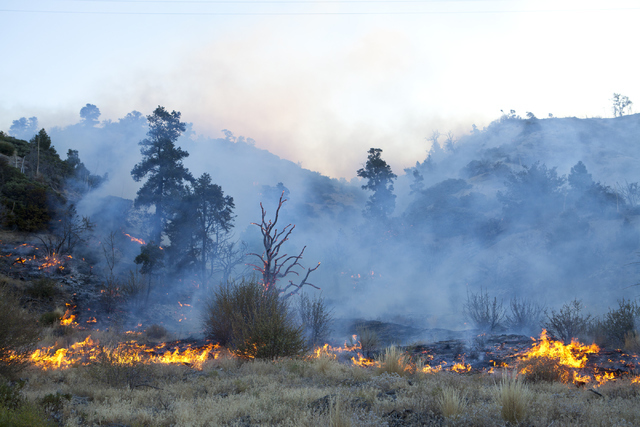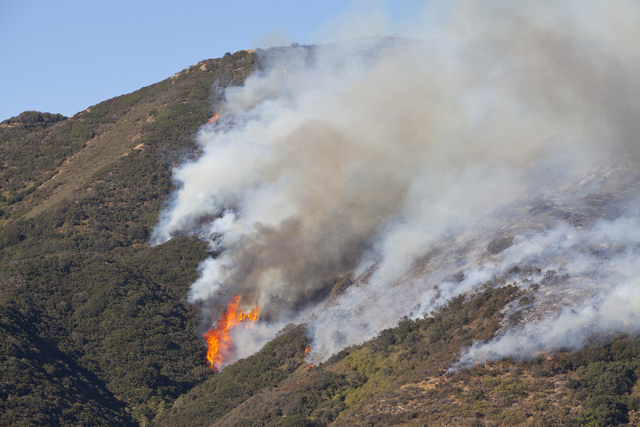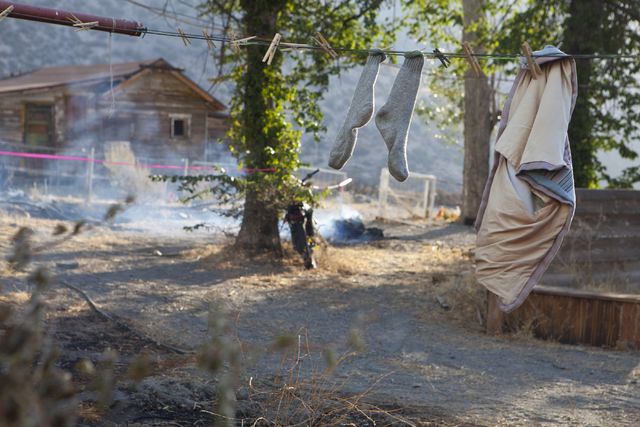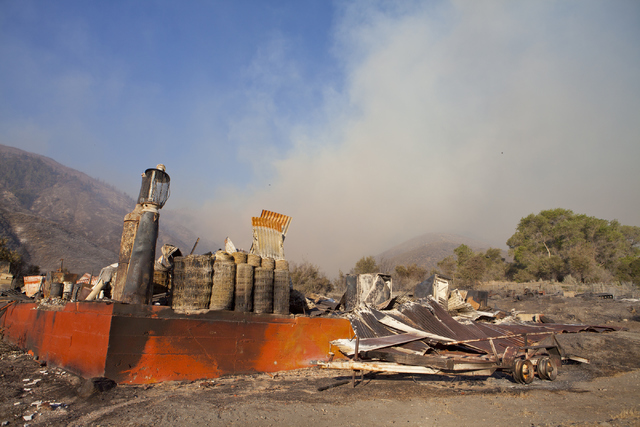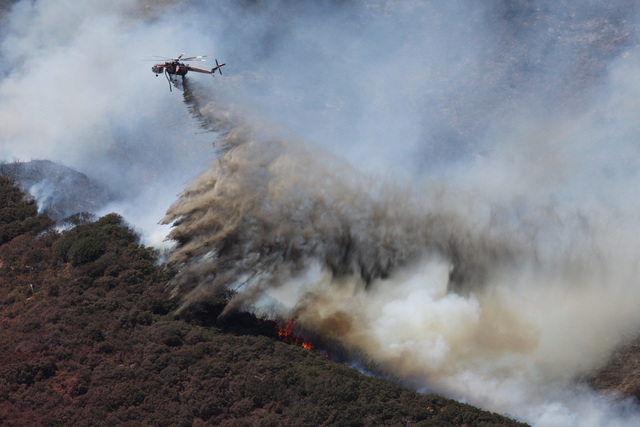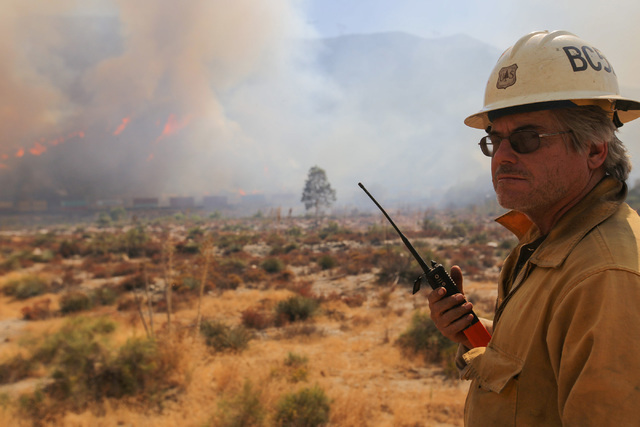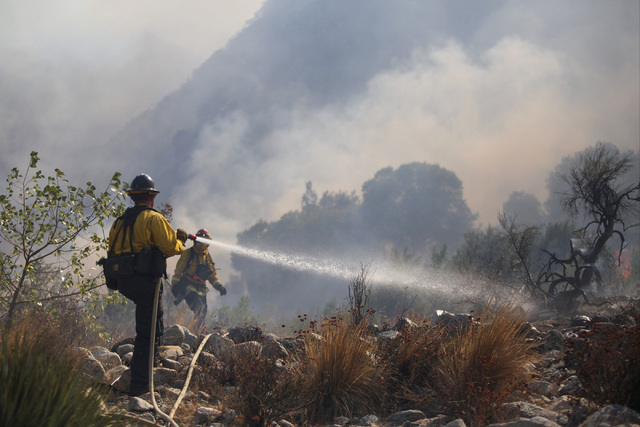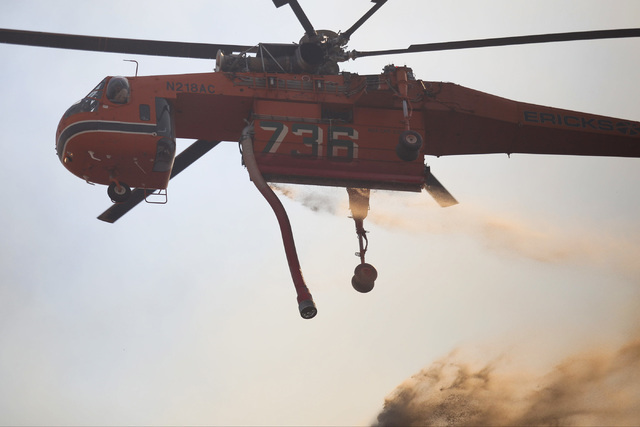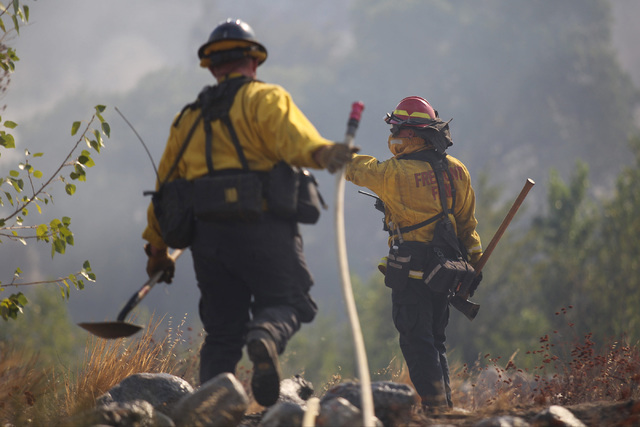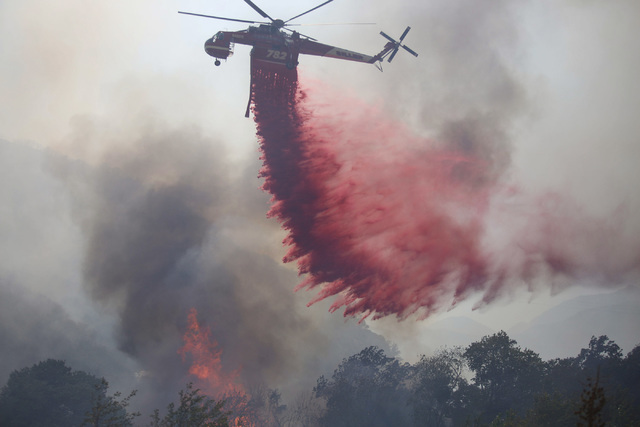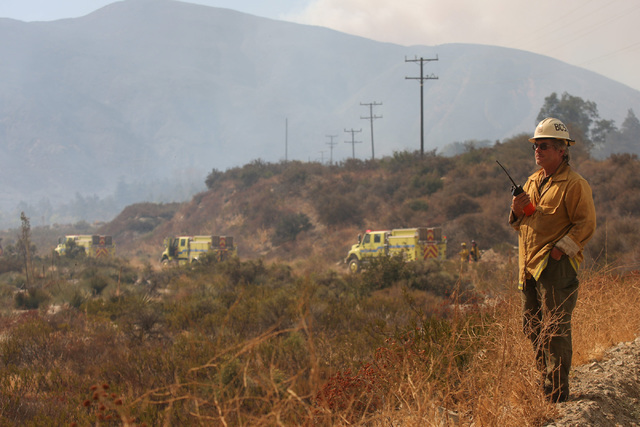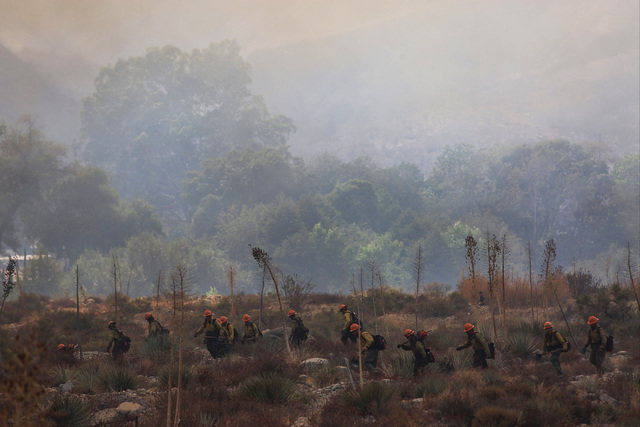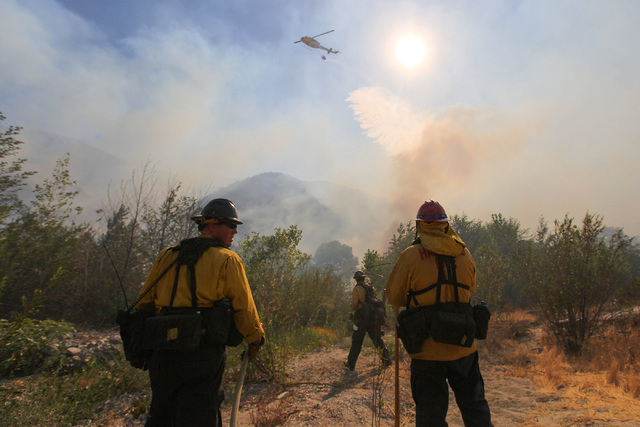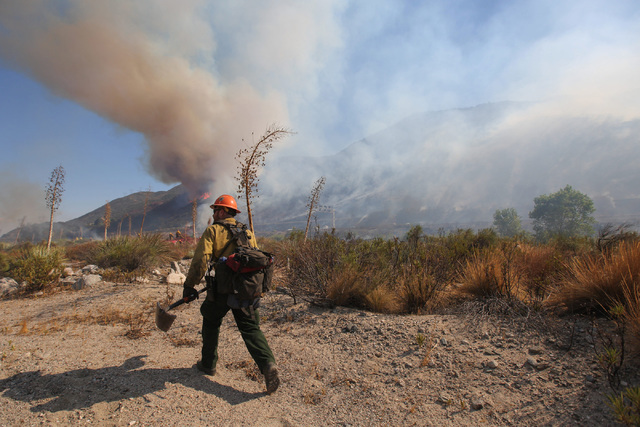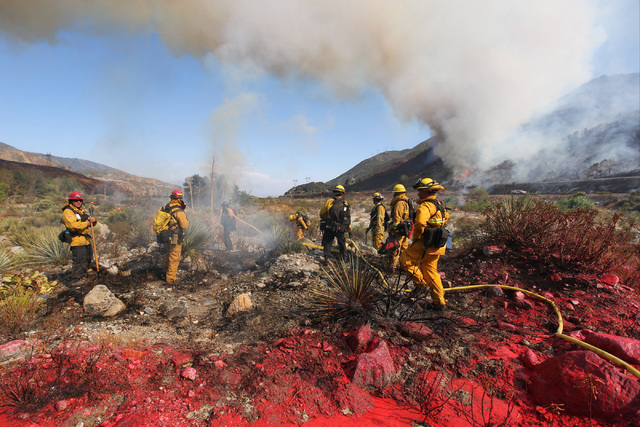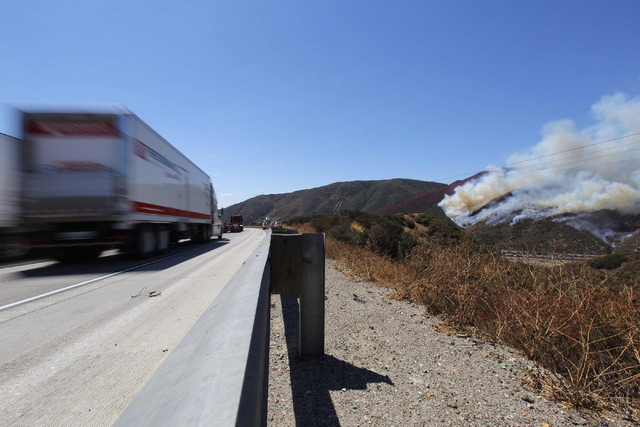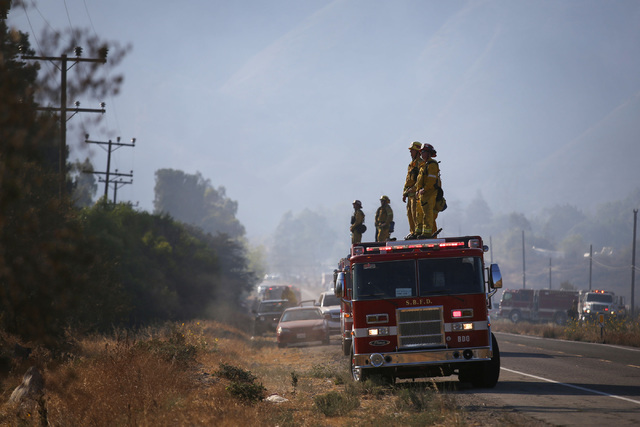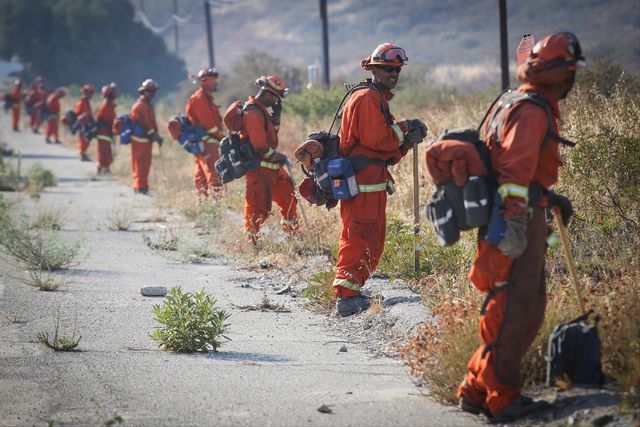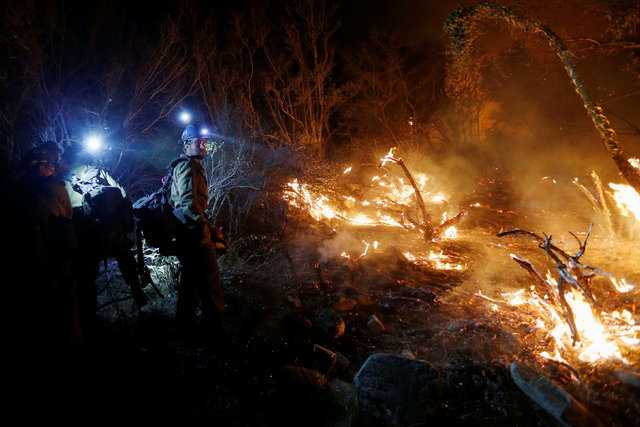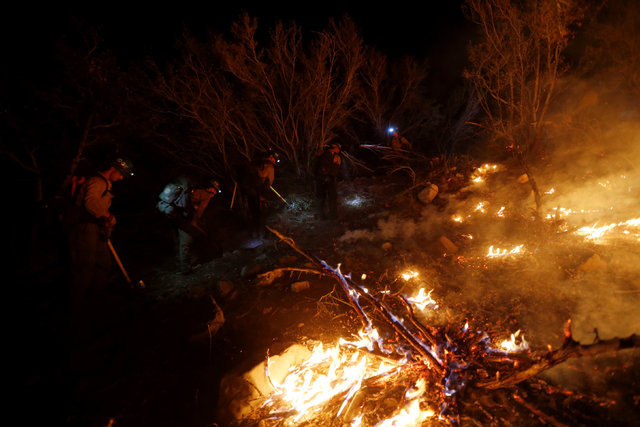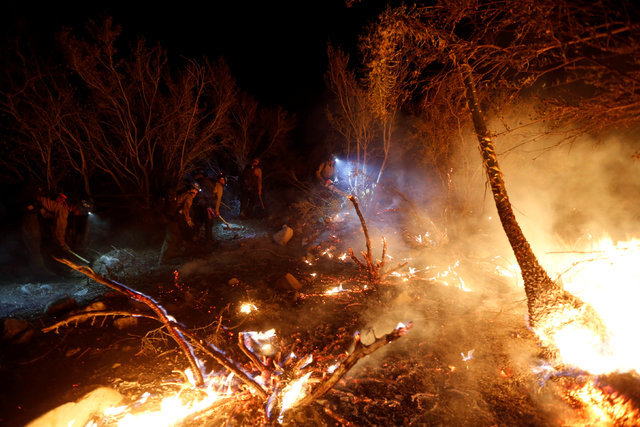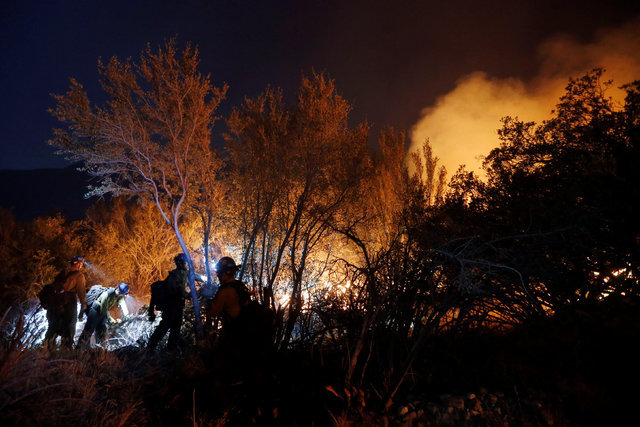Motorists and engineers get a front-row seat for ferocious Blue Cut firefight — PHOTOS
CAJON PASS, Calif. – Motorists on this newly reopened stretch of Interstate 15 got a front-row seat Thursday for the man-vs.-nature drama unfolding on the parched highlands, as firefighters battled the raging Blue Cut wildfire within sight of the key transportation route between Southern Nevada and Los Angeles.
Firefighters on the ground and in the air struggled to contain 30-foot flames racing up steep hillsides covered in tinder-dry vegetation, many of them less than a mile from the highway. Heavy crane helicopters dropped load after load of water on the southernmost pocket of the fire, which broke out Tuesday morning and by early Thursday had consumed more than 35,000 acres.
One southbound freight train traveling over Cajon Pass – about 225 miles southwest of Las Vegas and 60 miles east of Los Angeles — got too close to the battle for comfort.
At about 4 p.m., as the train approached the southern end of the pass, a sudden shift in the wind pushed a wall of flames across the tracks. With nowhere else to go, the train powered directly through the fire as a helicopter dropped red retardant on it.
Miles to the north, a towering column of smoke marked where the worst of the fire was still racing over mountains and through canyons, and continuing to threaten the ski town of Wrightwood and other areas in the San Gabriel Mountains and high Mojave Desert.
Firefighters were making some hard-won progress against the fire. At a 6 p.m. briefing, California state fire officials said they had the fire 22 percent contained, up from 4 percent earlier in the day, and had slowed its progress, with only about 4,000 acres burned during the day, bringing the total to 35,969. But temperatures approaching 100 degrees and gusty winds of 30 mph or more were still making the Blue Cut — named after a trail near the point of origin — a formidable foe.
The fire prompted authorities to issue evacuation orders for more than 34,000 homes and some 82,000 residents by Wednesday, but some of those residents – in areas near Hesperia and Victorville that were briefly threatened by the fire but escaped unscathed – were allowed to return to their homes on Thursday.
Others will not be so lucky when they are allowed to return.
Reporters who gained access to some hard-hit areas Thursday saw only twisted metal gates and rusted mailboxes where houses once stood. Flames had turned a lot full of cars — including some vintage models — into a junkyard of hollowed-out shells. Countless trees were scorched or gone.
An aerial flyover revealed significant property loss, but crews were just beginning to comb through the rubble to document the devastation.
“Most of the areas where there was structural damage, they’re still smoldering,” U.S. Forest Service spokesman Jake Rodriguez said.
Georgia Duncan, a spokeswoman for the American Red Cross in San Bernardino County, said it is likely that residents in some of those areas will have to wait “several more days” before the mandatory evacuation orders are lifted and they are allowed to return to see if their homes survived.
In the interim, the Red Cross has opened a second, larger shelter at the San Bernardino County fairgrounds, on the east side of the fire, to handle what could be a growing legion of refugees.
Though fewer than 100 people spent Wednesday night on Red Cross cots in Hesperia and Victorville, Duncan said the number could grow substantially in the next phase of the relief effort, when evacuation centers become longer-term shelters for people who have lost their homes.
“We’re going to gear up for the absolute worst,” Duncan said, adding that the new shelter could accommodate several thousand displaced people if necessary.
Authorities and private industry also are still in the early stages of tallying the economic impact from the fire, which hit tourism and shipping by shutting I-15 and railroad lines over Cajon Pass for two days.
The reopening of the interstate was welcome news for some gas stations in Hesperia.
A handful of stations that get their fuel deliveries from the other side of the pass had been forced to shut down their pumps Thursday morning because their underground tanks had run dry during the closure.
BNSF and Union Pacific trains also were again moving over three of the four train lines that run through Cajon Pass on Thursday, but a Union Pacific line remained shut because a bridge was damaged by the fire, said railroad spokesman Justin Jacobs. Union Pacific hopes to have the line open by early next week, he said.
The closure of the important rail corridor due to the fire disrupted train service and created a backlog, but the railroads began rerouting trains Wednesday and the problem was beginning to ease, he said.
“Slowly but surely they are getting the fire under control,” Jacobs said, adding that on average Union Pacific sends about 40 to 70 trains a day through the Cajon Pass corridor.
The Blue Cut fire has worsened what already has been a bad fire season in this part of California. Before I-15 completely reopened Thursday morning, one of the detours around the fire from Hesperia crossed through the charred remnants from an earlier wildfire.
The Pilot Fire, in the San Bernardino National Forest southwest of Hesperia, burned about 8,100 acres before firefighters contained it early Tuesday morning.
The Blue Cut Fire broke out about four hours later.
Review-Journal writer Jessica Terrones and The Associated Press contributed to this story.
RELATED
I-15 north reopens, but uncertainty hangs heavy as Blue Cut wildfire grows
82,000 people flee Southern California wildfire




